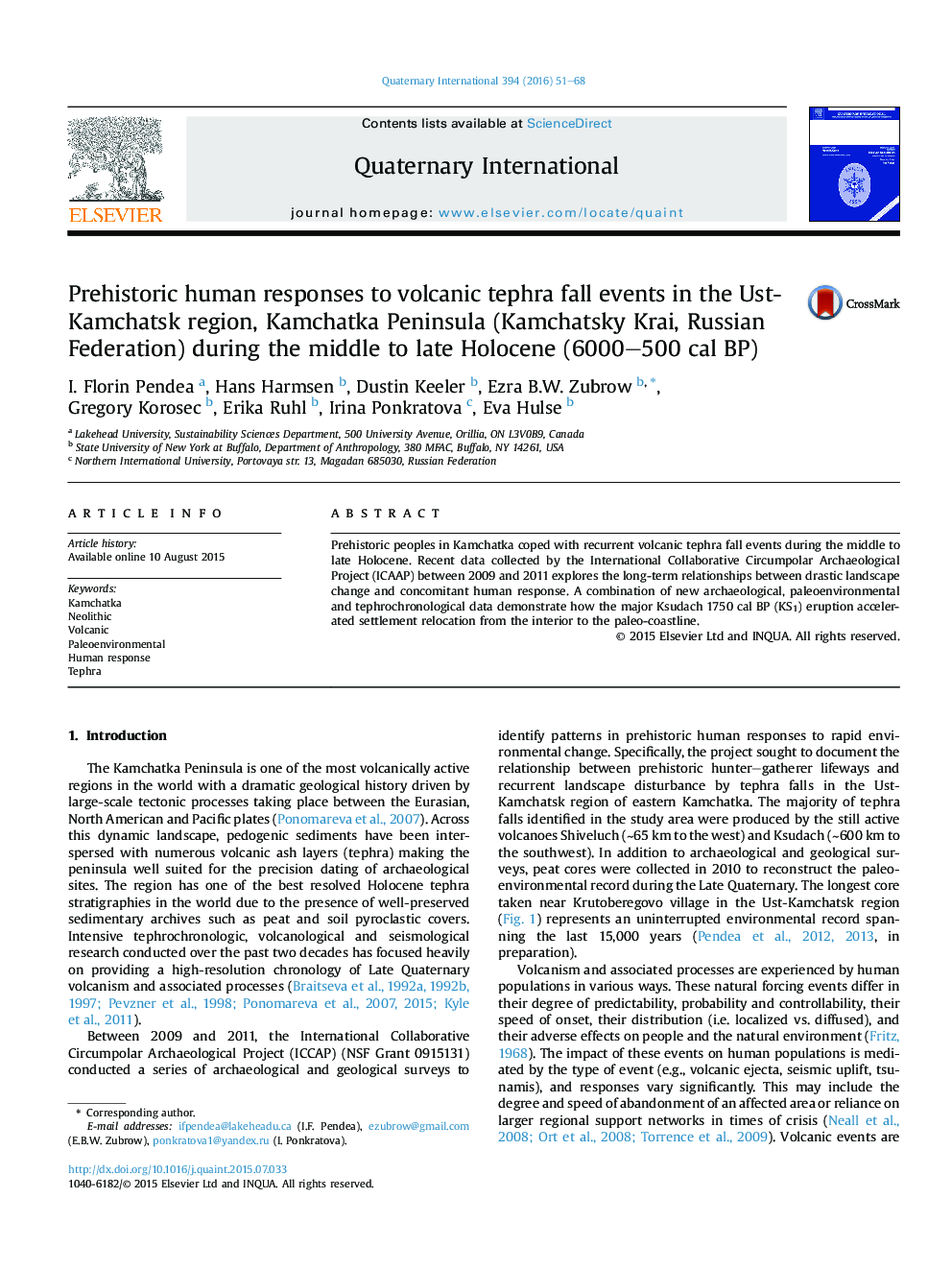| Article ID | Journal | Published Year | Pages | File Type |
|---|---|---|---|---|
| 1040306 | Quaternary International | 2016 | 18 Pages |
Abstract
Prehistoric peoples in Kamchatka coped with recurrent volcanic tephra fall events during the middle to late Holocene. Recent data collected by the International Collaborative Circumpolar Archaeological Project (ICAAP) between 2009 and 2011 explores the long-term relationships between drastic landscape change and concomitant human response. A combination of new archaeological, paleoenvironmental and tephrochronological data demonstrate how the major Ksudach 1750 cal BP (KS1) eruption accelerated settlement relocation from the interior to the paleo-coastline.
Related Topics
Physical Sciences and Engineering
Earth and Planetary Sciences
Geology
Authors
I. Florin Pendea, Hans Harmsen, Dustin Keeler, Ezra B.W. Zubrow, Gregory Korosec, Erika Ruhl, Irina Ponkratova, Eva Hulse,
